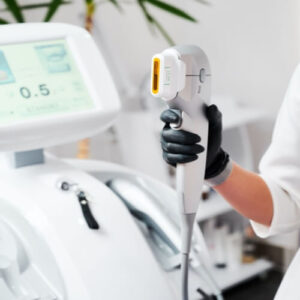Pantoprazole
What is Pantoprazole?
Pantoprazole is one of the most popular gastrointestinal medications belonging to the proton pump inhibitor family.
Its mechanism of action is the inhibition of the enzyme “hydrogen potassium ATPase”, which leads to the inhibition of the production of acids secreted in the stomach.
Pantoprazole uses
The uses of pantoprazole are varied, and they include:
- Treatment of erosive esophagus
- This is damage to the esophagus from stomach acid caused by gastroesophageal reflux disease, or GERD, in adults and children at least 5 years old.
- Treatment of Zollinger-Ellison syndrome
Side Effects
Taking pantoprazole may cause certain side effects, which are divided into:
1- The most common side effects
The most common side effects include:
- Headache
- diarrhea
- Abdominal pain
- nausea
- vomiting
- gases
- dizziness
- Pain in the joints
2- Rare side effects
In addition to the above, there are some serious and rare side effects, but they require a doctor’s examination when exposed to any of them, and they are:
| Side Effects | symptoms |
| Low levels of magnesium in the body | Change in heart rate – Furious muscle weakness – Dizziness – Cramps in the hands and feet Muscle cramps or pain Weakness and loss of taste |
| Vitamin B12 deficiency | Numbness or tingling in the hands and feet Menstrual disorders |
| Clostridium difficile infection in the intestine | – Watery feces – Abdominal pain – Heat |
| kidney damage | – Pain in the flank – Urination disorders |
| systemic lupus erythematosus (SLE) | – Heat – Exhaustion – Weight loss – Coagulation heartburn |
| Cutaneous lupus | A rash that appears scaly or red on the body |
Pharmacological forms
Lisinopril is available in the following dosage forms:
- Tablets
- liquid suspensions
- intravenous injection
Recommended dosage
Pantoprazole should be taken in doses determined according to the doctor’s recommendations. The dose for adults varies according to the state of the disease and is divided as follows:
| A pathological case | Recommended dosage |
| erosive esophagitis | The dose is 40 mg orally once a day for 8 weeks |
| Gastroesophageal reflux disease | By injection: the dose is 40 mg once a day for 7 to 10 days, given by intravenous infusion for 15 minutes. Parenteral treatment should be discontinued as soon as the patient can resume oral treatment Oral: The dose is 40 mg taken orally once a day. |
| Duodenal ulcer | The dose is 40 mg taken orally once a day The dose is increased every 12 weeks by 40 mg to a maximum of 120 mg per day for 28 weeks. |
| pylori infection | The recommended dose is 40 mg orally twice a day for 7 days, usually in combination with clarithromycin, amoxicillin or metronidazole. – followed by 40 mg orally of pantoprazole once daily until the 28th day. |
| Zollinger-Ellison syndrome | By injection: the dose is 80 mg taken every 12 hours, given as a 15-minute infusion. Oral: the dose is 40 mg twice a day, up to a maximum of 240 mg per day. |
Drug interactions
There are some drugs that are not taken together with pantoprazole, because they may cause a drug interaction that affects the effectiveness of one of the two drugs, the most prominent of these drugs are:
| Pharmacological Department | examples | Drug interaction |
| HIV drugs | – atazanavir – nelfinavir |
It is not recommended to take certain HIV medicines because pantoprazole may affect the effectiveness of these medicines. |
| Anticoagulants | Alvorfarin | Certain anticoagulants are not recommended as this may increase the risk of severe bleeding. |
| Cancer drugs | Methotrexate | Taking methotrexate with pantoprazole may increase the amount of methotrexate in your body. |
Alternatives to pantoprazole
Possible alternatives to pantoprazole oral tablets include:
- Lansoprazole
- Esomeprazole
- Omeprazole
- rabeprazole
- dexlansoprazole
Contraindications
There are several cases in which the use of pantoprazole is not indicated, the most prominent of which are:
- The presence of any allergic reactions to one of the components of the drug.
- Children under the age of 5.
There are cases in which pantoprazole is not taken except after consultation with and under the supervision of a doctor, including:
- during pregnancy
- Has liver disorders
- during the breastfeeding period
- If the patient suffers from osteoporosis
Guidelines for Pantoprazole drugs
There are some guidelines to consider when using pantoprazole, mainly:
- Do not take pantoprazole if the patient is allergic to one of the components of the drug
- Follow the doctor’s instructions and the recommended doses
- Do not take during pregnancy and breastfeeding unless under medical supervision
- If you miss a dose, you must make it up when you remember it, but if it is time for the next dose, you can skip the missed dose and not take both doses together.
- Pantoprazole may cause a change in the results of medical tests, so the patient must inform the doctor before performing any medical test.
Common questions
1- What is the correct behavior when taking an overdose?
When taking an overdose of pantoprazole, it is recommended to seek medical help immediately, as it may pose a threat to the patient’s health.
2- What should a patient do if he develops diarrhea while using pantoprazole?
Pantoprazole can cause diarrhea, which may be a sign of a new infection. If the patient develops watery or bloody diarrhea, seek medical help.
3- When is the right time to take pantoprazole?
Pantoprazole should be taken before food, preferably in the early morning, to protect the stomach during the day.
4- How long does pantoprazole take to work?
Pantoprazole starts working within 2.5 hours – that’s the time it takes to block the production of acid in the stomach – and lasts up to 24 hours.
Pantoprazole does not provide rapid relief of symptoms of indigestion or acid reflux as quickly as other antacids (Maalox), and it may take up to 4 weeks for the medicine to work properly, so the patient may still have some symptoms during this time. .





